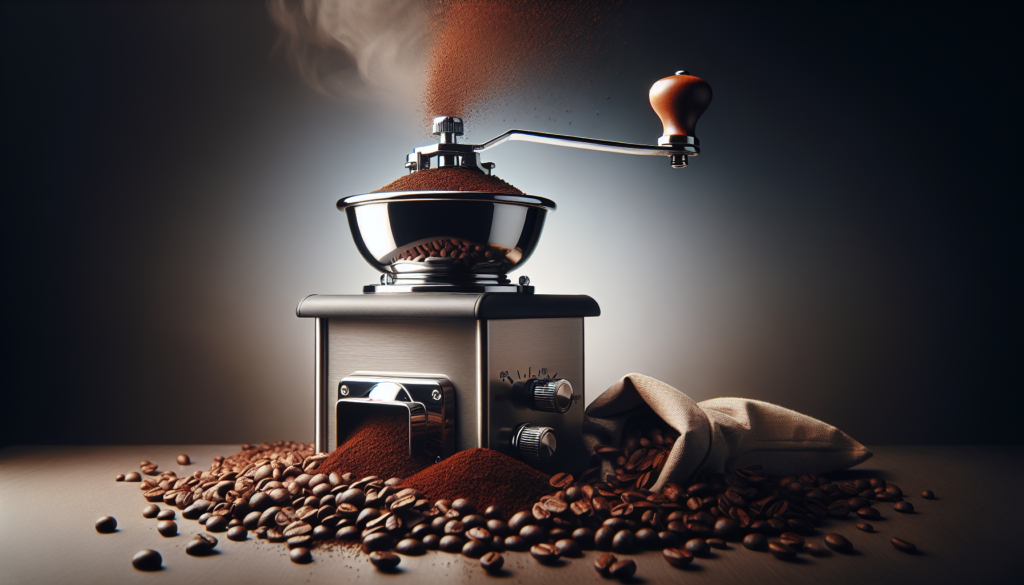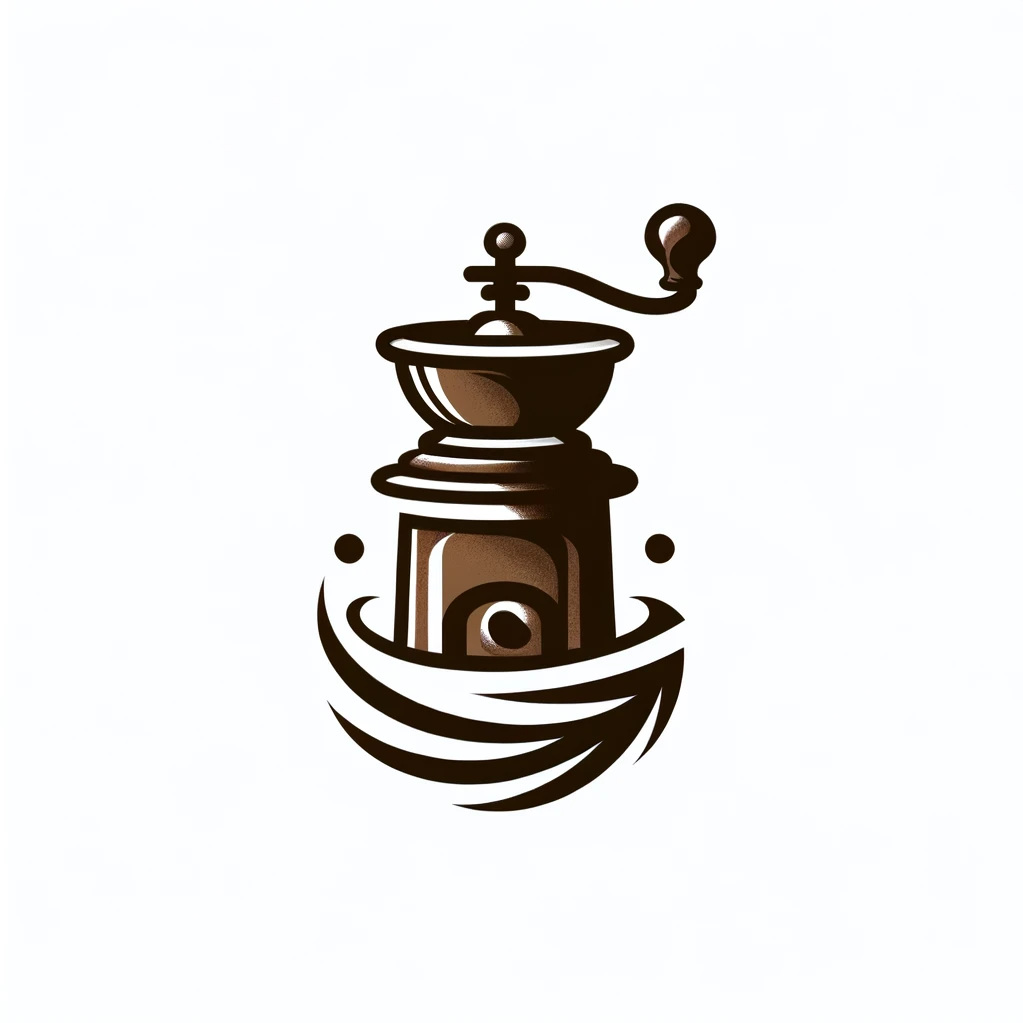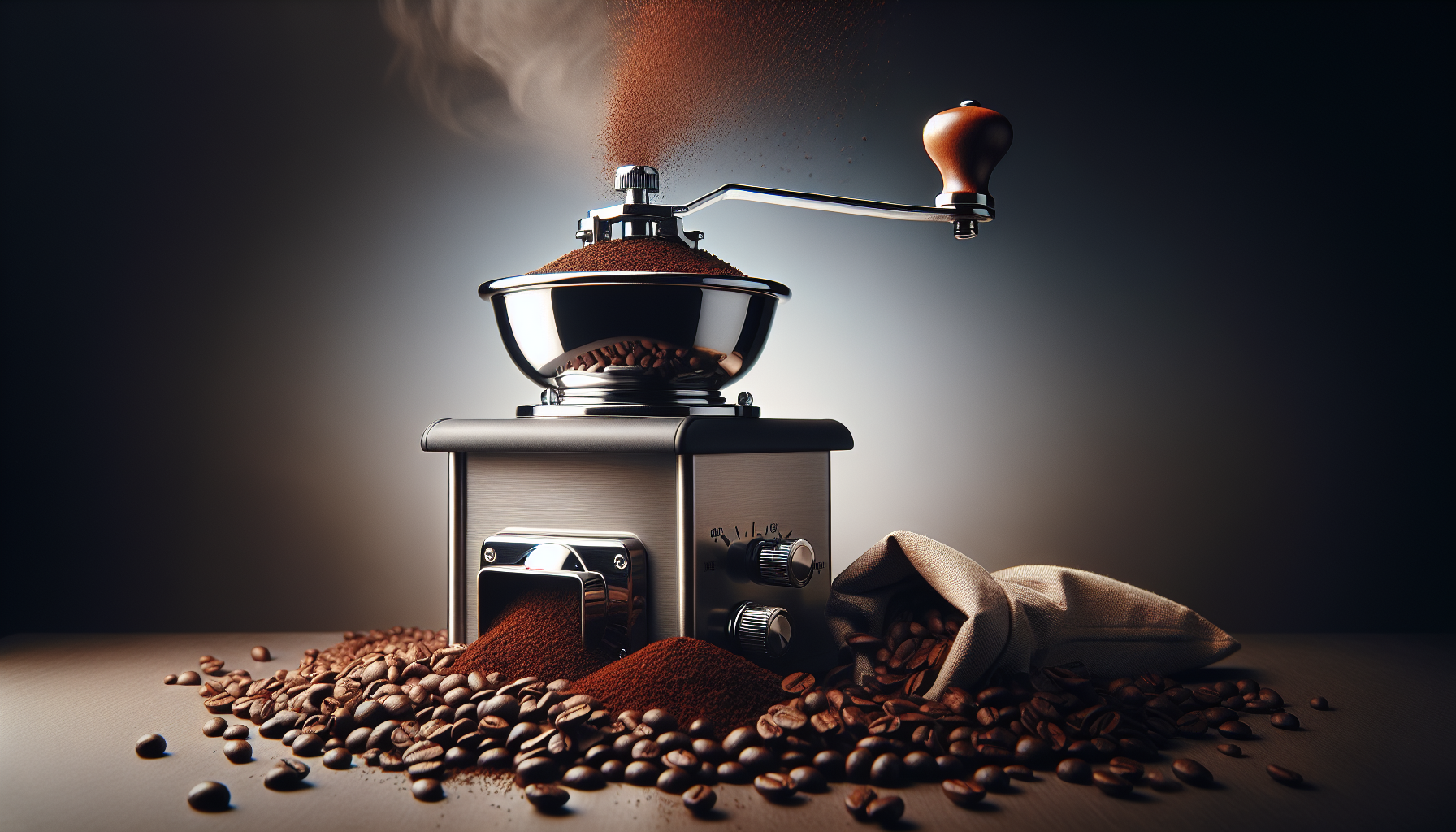If you’re a coffee lover, you’ve probably wondered whether it’s worth the effort to grind your own coffee beans. With so many options available at grocery stores and cafes, it may seem easier to just grab a bag of pre-ground coffee. However, there’s something uniquely satisfying about the aroma and taste of freshly ground coffee. In this article, we’ll explore the pros and cons of grinding your own coffee, helping you decide if it’s worth investing in a grinder for your caffeine fix.

CHECK OUT COFFEE GRINDERS ON AMAZON
Benefits of Grinding Your Own Coffee
Freshness and Flavor
One of the main advantages of grinding your own coffee is the freshness and flavor it brings to your cup. When coffee beans are ground, they release essential oils and aromatic compounds that contribute to the overall taste and aroma. By grinding your own coffee, you ensure that these flavors are preserved until the moment you brew your cup. Pre-ground coffee, on the other hand, loses its freshness and flavor more quickly as the essential oils evaporate, leading to a less vibrant and enjoyable coffee experience.
Control over Grind Size
Another benefit of grinding your own coffee is the ability to control the size of the grind. Different brewing methods, such as espresso, pour-over, French press, and cold brew, require different grind sizes to achieve optimal extraction. With your own grinder, you have the flexibility to adjust the grind size according to your preference and the specific brewing method you are using. This control allows you to optimize the extraction and ensure a consistently great tasting cup of coffee every time.
Experimentation with Bean Varieties
Grinding your own coffee also opens up a world of possibilities when it comes to exploring different bean varieties. When you purchase pre-ground coffee, you are limited to the options provided by the manufacturer. However, by grinding your own beans, you can choose from a wide range of coffee beans sourced from different regions and with varying flavor profiles. This allows you to discover new and exciting flavors, and tailor your coffee experience to your personal taste preferences.
Cost and Convenience
While it may seem counterintuitive, grinding your own coffee can actually save you money in the long run. Whole coffee beans tend to be more cost-effective than pre-ground coffee, especially if you purchase them in bulk. Additionally, grinding your own coffee ensures that you only grind as much as you need for each brewing session, minimizing waste and maximizing the freshness of your coffee. In terms of convenience, having a grinder at home means you have the ability to grind coffee whenever you want, without having to make a trip to the store or wait for a delivery.
Grinding Methods and Equipment
Blade Grinders
Blade grinders are the most common type of grinder and are often found in many households. They consist of a blade that spins rapidly, chopping the coffee beans into smaller pieces. While blade grinders are relatively inexpensive and easy to use, they tend to produce an uneven grind, with some grounds being finer and others coarser. This inconsistency can lead to uneven extraction and suboptimal brewing results. However, for casual coffee drinkers who are not too particular about grind consistency, a blade grinder can still suffice.
Burr Grinders
Burr grinders are considered to be the gold standard when it comes to coffee grinding. They use two revolving abrasive surfaces, called burrs, to crush the beans into a consistent size. Burr grinders offer precise control over the grind size, allowing you to achieve the perfect grind for your preferred brewing method. They produce uniform particles, resulting in even extraction and a more balanced and flavorful cup of coffee. While burr grinders are generally more expensive than blade grinders, their superior performance and consistency make them a worthwhile investment for coffee enthusiasts.
Manual Grinders
Manual grinders, as the name suggests, require manual effort to grind the coffee beans. They typically consist of a handle and a grinding mechanism, which can be adjusted to achieve the desired grind size. Manual grinders are compact, portable, and often less expensive than electric grinders. They can be a great option for those who enjoy the process of grinding their own coffee, as well as for people who value portability, such as campers or travelers.
Electric Grinders
Electric grinders offer convenience and speed, making them a popular choice among coffee lovers. They are equipped with powerful motors that make quick work of grinding the coffee beans. Electric grinders also come with various settings and presets, allowing you to easily adjust the grind size according to your brewing needs. While they tend to be pricier than manual grinders, electric grinders are ideal for those who prioritize speed and efficiency in their coffee routine.
Factors to Consider When Choosing a Grinder
Budget
One of the first factors to consider when choosing a coffee grinder is your budget. Grinders can vary significantly in price, ranging from affordable options to high-end, professional-grade machines. It’s important to determine how much you are willing to spend and find a grinder that offers the best value for your money. Remember that investing in a higher-quality grinder often leads to better grind consistency and overall brewing results.
Grind Consistency
Grind consistency is a crucial factor in achieving optimal extraction and a flavorful cup of coffee. Look for a grinder that can consistently produce particles of the desired size for your chosen brewing method. Burr grinders are generally regarded as the best option for achieving uniform grounds, while blade grinders may result in a more uneven grind. Consider the importance of grind consistency in your coffee routine and choose a grinder accordingly.
Ease of Use
Another aspect to consider is the ease of use of the grinder. Some grinders come with user-friendly features, such as intuitive controls and clear instructions, making them suitable for beginners. Others may require a bit more time and practice to operate effectively. Consider your experience level and how much time and effort you are willing to put into mastering the grinder’s functionalities.
Cleaning and Maintenance
Keeping your grinder clean is essential for maintaining its performance and extending its lifespan. Look for grinders that are easy to disassemble and clean, preferably with dishwasher-safe parts. Some grinders may require more frequent cleaning and maintenance than others, so consider the level of upkeep you are comfortable with before making a decision.
Additional Features
In addition to the basic functionalities, some grinders come with extra features that can enhance your coffee brewing experience. These may include built-in scales, timers, or dose control mechanisms, among others. While these features can be convenient, they often come at a higher price point. Consider whether these additional features align with your needs and priorities before making a purchase.
Grinding Techniques for Different Brewing Methods
Espresso
Espresso is a concentrated form of coffee that requires a very fine grind size to produce the desired extraction. When grinding coffee for espresso, it is important to ensure a consistent and fine grind to achieve optimal results. A burr grinder is recommended for this brewing method, as it allows precise control over the grind size. Aim for a grind size that is similar to table salt or slightly finer.
Pour-Over
Pour-over brewing involves slowly pouring hot water over a bed of coffee grounds, allowing the water to extract the flavors as it passes through. For pour-over, a medium to medium-fine grind size is ideal. This allows for a balanced extraction and a clean, flavorful cup of coffee. Burr grinders are again the preferred choice for this brewing method, as they provide better control over the grind size.
French Press
French press brewing requires a coarse grind size to prevent the fine particles from passing through the metal mesh filter and ending up in the cup. A consistent and coarse grind allows for a full-bodied and rich cup of coffee. Both burr grinders and blade grinders can be used for French press brewing, as the coarser grind size is more forgiving in terms of extraction.
Cold Brew
Cold brew coffee involves steeping coffee grounds in cold water for an extended period, typically 12 to 24 hours. This brewing method requires a very coarse grind size to compensate for the longer extraction time and prevent over-extraction. A consistent and coarse grind is important to achieve a smooth and well-rounded cold brew. Burr grinders are recommended for this method to ensure an even grind size.
Storage and Shelf Life of Ground Coffee
Air-tight Containers
To prolong the freshness of your ground coffee, it is important to store it in an air-tight container. Oxygen is one of the main factors that can cause coffee to go stale, so keeping it in a sealed container helps to minimize its exposure to oxygen and preserve its flavors for longer. Invest in a good-quality storage container with a reliable seal to ensure the best possible shelf life for your ground coffee.
Avoiding Heat and Moisture Exposure
Heat and moisture can also accelerate the degradation of coffee grounds, leading to a loss of flavor and aroma. It is essential to store your ground coffee away from direct sunlight, heat sources, and areas with high humidity. Avoid storing it in the refrigerator or freezer, as the temperature fluctuations can cause moisture to condense on the coffee, negatively affecting its quality.
Best Practices for Prolonging Freshness
To maximize the shelf life of your ground coffee, follow these best practices:
-
Only grind as much coffee as you need for each brewing session. This minimizes the exposure of the remaining beans to oxygen and helps maintain freshness.
-
Store your whole coffee beans in a cool, dry place, preferably in a dark container, away from light and heat sources. Grinding the beans just before brewing ensures maximum flavor and aroma.
-
Use a grinder with consistent grind quality to minimize variations in particle size, which can affect extraction and the overall taste of your coffee.
-
Clean your grinder regularly to remove any residual oils and particles that can impair the flavor of your coffee. Follow the manufacturer’s instructions for cleaning and maintenance.
-
Experiment with different storage containers and find one that suits your needs and preferences. Some containers come with built-in valves to release excess carbon dioxide without allowing oxygen to enter.
By implementing these practices, you can enjoy the freshest and most flavorful cup of coffee possible, even when grinding your own beans.
Drawbacks of Grinding Your Own Coffee
Time and Effort
Grinding your own coffee involves a certain amount of time and effort that some people may find inconvenient. It adds an extra step to your coffee routine, requiring you to measure and grind the beans before brewing. This extra time and effort may not be suitable for those who prefer a quick and easy coffee preparation process.
Investing in Equipment
To grind your own coffee, you will need to invest in a grinder, which can be an additional expense. While there are affordable options available, high-quality grinders can be quite expensive. Consider your budget and how much you are willing to invest in equipment before deciding to grind your own coffee.
Inconsistent Results for Beginners
Grinding coffee beans to achieve the desired grind size can be challenging, especially for beginners. It may take some time and practice to perfect the technique and achieve consistent results. In the beginning, you may experience uneven grounds, which can negatively impact the quality and taste of your brewed coffee. However, with practice and patience, you can improve your grinding skills and achieve better results over time.
Noise and Mess
Grinding coffee beans can be noisy, especially with electric grinders. If you live in a shared space or have noise-sensitive family members or neighbors, the noise generated by grinding may be a consideration for you. Additionally, grinding coffee can create a mess, with coffee grounds scattering around. It is important to have a clean workspace and be prepared to clean up after each grinding session.
CHECK OUT COFFEE GRINDERS ON AMAZON
Alternative Options for Freshly Ground Coffee
Purchasing from Specialty Coffee Shops
If the idea of grinding your own coffee doesn’t appeal to you, or if you are unable to invest in a grinder, purchasing freshly ground coffee from specialty coffee shops is a great alternative. These shops often have high-quality grinders and trained baristas who can grind the beans to your desired specifications. They can guide you in choosing the right grind size for your preferred brewing method and offer a wide selection of specialty coffee beans.
Using a Local Coffee Roaster
Supporting local businesses and coffee roasters is another excellent option for freshly ground coffee. Many local coffee roasters offer freshly ground coffee in addition to whole beans. They take pride in their craftsmanship and can provide you with expertly ground coffee tailored to your preferences. Local roasters often have a wide variety of single-origin and specialty blends, allowing you to explore different flavors and discover new favorites.
Subscription Services
Coffee subscription services have become increasingly popular, offering freshly roasted and ground coffee delivered to your doorstep on a regular basis. These services often work directly with coffee farmers and roasters, ensuring the highest quality and freshness. With a subscription, you can enjoy the convenience of freshly ground coffee without the need for a grinder. Simply choose your preferred grind size and let the experts take care of the rest.
Summary and Conclusion
Grinding your own coffee offers numerous benefits, including freshness, flavor control, experimentation with bean varieties, and cost savings. Whether you choose a blade grinder, burr grinder, manual grinder, or electric grinder depends on your budget and personal preferences. Factors to consider are budget, grind consistency, ease of use, cleaning and maintenance, and additional features. Different brewing methods require different grind sizes, and proper storage and maintenance are essential for prolonging the freshness of ground coffee. While there are drawbacks to grinding your own coffee, such as time and effort, equipment investment, inconsistent results for beginners, and potential noise and mess, there are also alternative options, such as purchasing from specialty coffee shops, using local coffee roasters, or subscribing to coffee delivery services. Ultimately, the decision to grind your own coffee depends on your commitment to freshness and flavor, your willingness to invest time and effort, and your preferences for customization and convenience.

